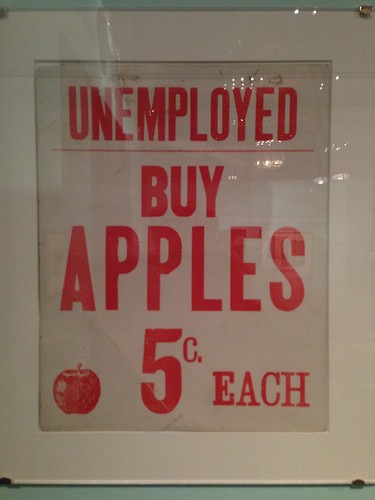 |
| Depression era sign, Lunch Hour NYC (NYPL.org) |
I spend at least one or two days of almost every week at the
New York Public Library's Research Branch (the Schwarzman Building, soon to undergo a monstrous transformation), but so narrow and routine are my tracks there that it took
a post on Jeremiah's Vanishing New York to draw me to the "
Lunch Hour NYC" exhibit on the library's first floor. It is a delight, and if you're in Manhattan and anywhere near 42nd St. and Bryant Park, devote a half hour to seeing it. The gist of the exhibit is that in many ways
New York City differs from the rest of the country, but in terms of
lunch, a word whose definition the exhibit accords its own display, New York has often been very distinctive, as well as a pacesetter for the rest of the USA. From oyster carts and pretzel venders, to bagel-brimming delicatessens, to the
Horn and Hardart automats that gladdened not only numerous city dwellers' stomachs but Hollywood screenwriters' imaginations as they dreamt up scenarios and settings, to that American culinary staple,
peanut butter, as a lunchtime nutritional staple, to sumptuous power lunches where the city's (and often the country's and globe's) most important people made sure to be seen, the exhibit casts a wide net and offers many pearls.
 |
| All about peanut butter for lunch (NYPL.org) |
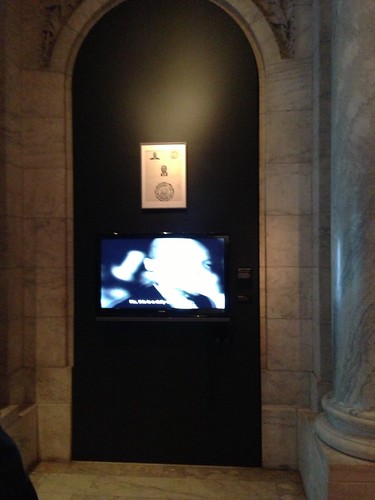 |
| Fr. Divine, immortalized by Ralph Ellison (NYPL.org) |
Lunch, it turns out, first appears in 16th century English as a rendering of the Spanish
lonja, meaning a slice of ham (from the
Oxford English Dictionary: R. Percyvall Dict. at Lonja de tocino, A lunch of bacon,
frustum, lardi.), while its supposed derivative,
luncheon, appeared a decade or more before, with the same meaning. As the meal following breakfast, lunch, the more popular term, was considered "a vulgarism or a fashionable affectation," in the early 19th century (from the
Oxford English Dictionary:
H. D. Best 307
The word
lunch is adopted in that ‘glass of fashion’, Almacks, and
luncheon is avoided as unsuitable to the polished society there exhibited), and still in its salad days if salads hardly made any menus but those of the penniless, but by the end of the century it had gained currency and become the name of the midday meal all English-speakers know today.
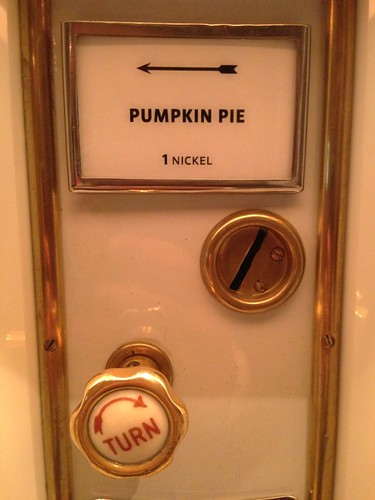 |
| The automat case handle (NYPL.org) |
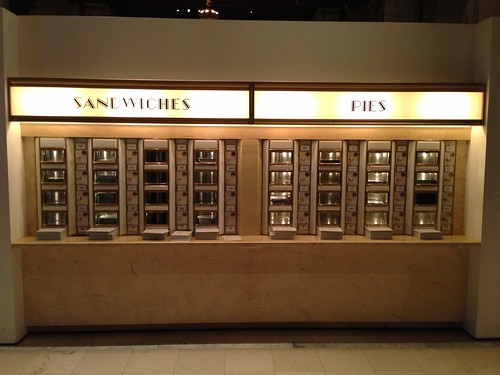 |
| The automat case (NYPL.org) |
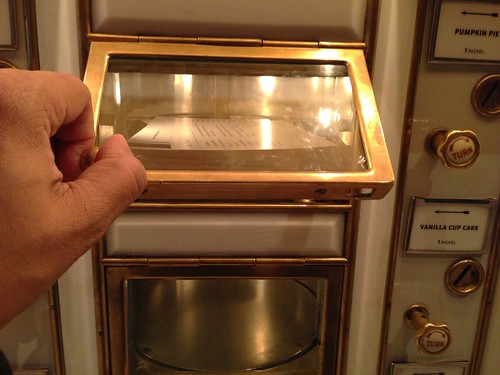 |
Opening one of the doors, with free
recipes inside (NYPL.org) |
There's a little section devoted to the Algonquin Hotel and its legendary "round table," with drawings and photographs of notable attendees, including Alexander Woollacott and Dorothy Parker. There is a section devoted to African American lunchers, with an immense reproduction of a cafeteria packed with black diners. I grew up hearing "Why don't you go sell an apple?" as a snide remark, and the exhibit includes materials, like the poster above, detailing how this was for the most destitute of the destitute in the city (and others), at least temporarily, an employment option. Another wall features archival material and historical documents on dieting, which gained in popularity in the post-World War II era. Not only New York-based magazines, especially those geared towards women, but some restaurants attempted to capitalize on the growing interest in growing thinner and more svelte. At the exhibit's end perch artists' books, which show how great a subject lunch food can be in the right creative hands. Across from it, a multi-screen wall flashes images recent lunch-takers in the city, capturing and underlining the diversity and commonalities that have marked New York mid-day dining habits for nearly two centuries. The exhibit is one of the few free (visual, tactile, intellectual) lunches you can get in New York, and you won't gain a pound enjoying it.
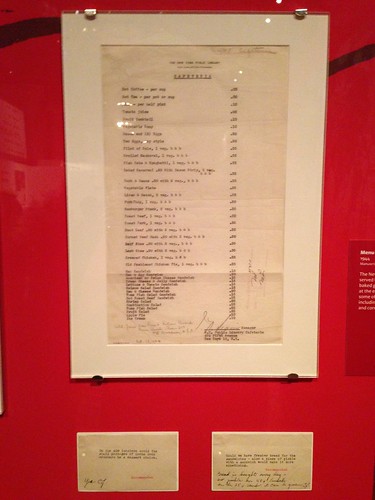 |
| A menu from 1954, I believe (NYPL.org) |
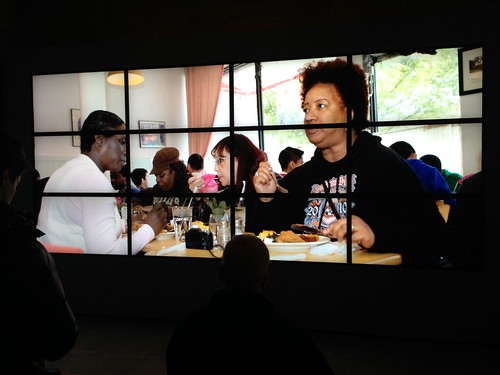 |
| Ladies who lunch, in 2012 (NYPL.org) |

















No comments:
Post a Comment